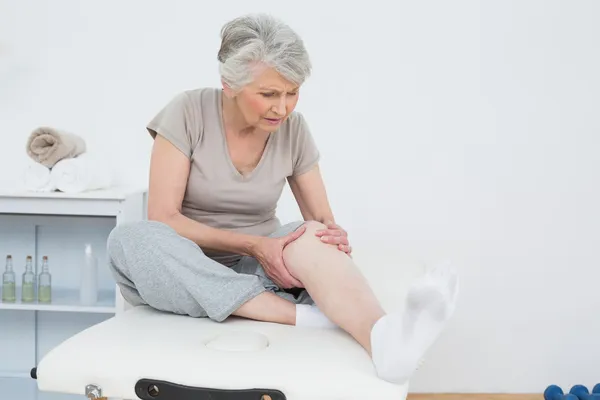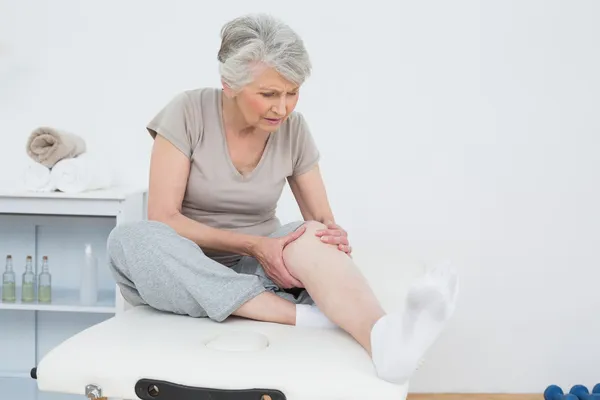Does Joint pain and stiffness mean your body Is aging faster than you are? – Yes it could be. As we age, our bodies undergo various changes, and one of the most common is joint pain and stiffness which can be a sign of premature aging. This is because the aging process can cause changes to the joints that can lead to pain and stiffness. These changes include Cartilage loss, Ligament shortening, and Joint fluid loss. While these symptoms are often associated with the natural aging process, they can also indicate that your body is aging faster than should. Here’s how to know that your pain and stiffness are premature aging-related.
Here are five ways to know your Joint pain and stiffness means you are Aging Faster
Here are five ways to know your joint pain and stiffness means you are Aging Faster…

You experience pain and stiffness in multiple joints.
Your pain is worse in the morning and after sitting for long periods.
If your joint pain is worse in the morning and after sitting for long periods, it’s a sign that your cartilage is not getting enough lubrication. When you move, your joints produce fluid that helps to lubricate the cartilage. Cartilage is a specialized connective flexible tissue that is made up of cells called chondrocytes. Chondrocytes produce a matrix of collagen and proteoglycans, which give cartilage its strength and flexibility. So when you’re not moving, this fluid goes down, which can make your joints feel stiff and painful.
Your pain is worse when you’re going up or down stairs.
Some activities can have you going up or down stairs, if you feel pain more during this time, it’s a sign that your joints are not strong enough to support your weight. As we age, our muscles and tendons lose strength, which can make it harder to support our joints. This can lead to pain, especially when we’re doing activities that put a lot of stress on our joints, such as going up or down stairs.
Your pain is worse when you’re cold or damp
Joint pain can be a debilitating condition that can significantly impact your quality of life. If you find that your joint pain worsens in cold or damp weather, it’s important to understand that it could be a sign that your joints are sensitive to changes in weather. This is because cold temperatures can cause your muscles to tighten, which can put more pressure on your joints. Damp weather can also make your joints feel stiff and painful.
You have a family history of arthritis
A family history of arthritis can increase your risk of developing the condition yourself. Arthritis is partly genetic, and having a parent or grandparent with arthritis means you have a higher chance of inheriting the genes that increase your risk and when this happens at an early age it may be considered a sign of aging quickly.
If you’re experiencing any of these symptoms, it’s important to see a doctor to get a diagnosis and discuss treatment options. There are a number of things you can do to manage your joint pain and stiffness, such as exercise, weight loss, and physical therapy. In some cases, medication may also be necessary.
Lifestyle Modifications for Joint Health
While aging is an inevitable process, certain lifestyle modifications can help slow down the aging process and alleviate joint pain and stiffness:
Maintain a Healthy Weight: Excess weight puts additional stress on joints, exacerbating pain and stiffness. Losing even a small amount of weight can significantly reduce the burden on your joints.
Regular Exercise: Regular physical activity is crucial for maintaining joint flexibility, strengthening muscles that support joints, and reducing inflammation. Low-impact exercises like walking, swimming, or cycling are particularly beneficial for joint health.
Read Related Also: Does tinnitus cause hearing loss in normal hearing individuals?
Nutrition and Hydration: A balanced and nutritious diet rich in antioxidants, vitamins, and minerals can support joint health and reduce inflammation. Additionally, staying adequately hydrated helps keep joint fluids healthy and lubricated.
Rest and Recovery: Adequate rest and recovery are essential for allowing joints to heal and repair. Avoid overexertion and listen to your body’s signals to prevent joint strain and overuse.
Stress Management: Chronic stress can contribute to inflammation and worsen joint pain. Incorporate stress-reducing techniques such as yoga, meditation, or deep breathing exercises into your daily routine.
Treatment Options for Joint Pain and Stiffness
In addition to lifestyle modifications, various treatment options can help manage joint pain and stiffness:
Over-the-counter Pain Relievers: Nonsteroidal anti-inflammatory drugs (NSAIDs) like ibuprofen or naproxen can effectively relieve mild to moderate joint pain and inflammation.
Prescription Medications: For more severe joint pain or inflammation, stronger prescription medications, such as corticosteroids or disease-modifying antirheumatic drugs (DMARDs), may be prescribed.
Physical Therapy: Physical therapy can help improve joint function, strengthen muscles around joints, and increase flexibility, reducing pain and stiffness.
Joint Injections: Injections of corticosteroids or hyaluronic acid into affected joints can provide temporary pain relief and improve joint function.
Surgical Interventions: In severe cases where joint damage is extensive, surgical interventions such as joint replacement may be considered to restore joint function and alleviate pain.
Remember, early intervention and proper management of joint pain and stiffness can significantly improve joint health, reduce pain, and slow down the aging process. Consult a healthcare professional to determine the underlying cause of your joint pain and discuss appropriate treatment options.






